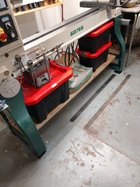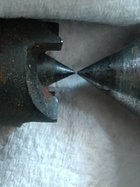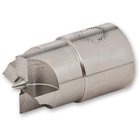I have some of that interlocking floor tile stuff from HF but I think it's too soft. What are some ideas for something fairly thin to stick under the round feet of my lathe to keep it from scooting around from out of balance blanks etc.?
Cheaper the better. I don't want to use wood because the shop is fairly damp and I'm afraid eventually it might cause some rust issues.
I don't want to bolt it down because I might want to move it to a different spot someday and I'm not getting any younger or more flexible to get down there and drill holes etc..
I figure to lift it up, clean the floor of saw dust so what ever I use doesn't slide around, maybe even glue whatever I come up with and then set the lathe down on top. I'm sure there is something that can be re-purposed but I'm drawing a blank. I thought of tire sidewalls but none of those laying around at the moment.
Ideas?
Cheaper the better. I don't want to use wood because the shop is fairly damp and I'm afraid eventually it might cause some rust issues.
I don't want to bolt it down because I might want to move it to a different spot someday and I'm not getting any younger or more flexible to get down there and drill holes etc..
I figure to lift it up, clean the floor of saw dust so what ever I use doesn't slide around, maybe even glue whatever I come up with and then set the lathe down on top. I'm sure there is something that can be re-purposed but I'm drawing a blank. I thought of tire sidewalls but none of those laying around at the moment.
Ideas?



